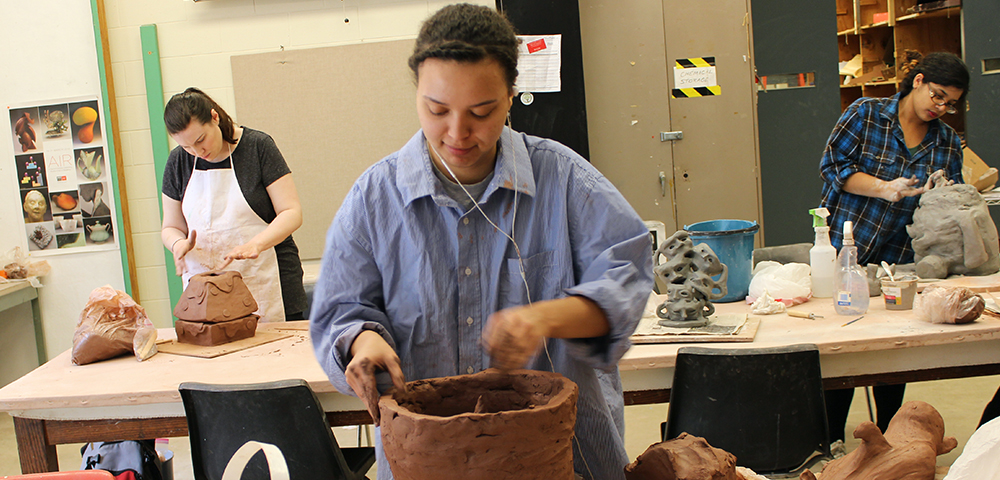
Offering students an emphasis in either traditional practice or interactive media, the sculpture concentration provides both disciplinary focus and an environment for interdisciplinary exploration. Advanced students work independently in individual studio spaces, train at outside arts organizations, and have access to a woodworking shop, a ceramics lab, plaster facilities, interactive media and robotics equipment, in addition to further resources offered by the Department of Fine Arts and the University at large. Students may also apply for the Advanced Sculpture Internship, which provides training in digital fabrication at the LEAP Academy Fabrication Lab. This breadth of training supports graduates with the skills and thinking necessary for careers in today’s diverse and changing art world.
Our emphasis on authorship in the built environment aims to strengthen and focus each student’s sense of personal direction and efficacy within a wide framework of contemporary art practice. Through a course of study that begins with the Sculpture Foundation class, students may take an array of offerings which include ceramics, object making, new media, ecological art, conceptual art, sustainable design, community art and programmable, interactive media. The culmination of work in this concentration is a capstone project. This semester-long investigation in a student elected area of advanced practice, becomes the beginning of a portfolio in fine art. The capstone work is formally shown at the annual Student Thesis Exhibition in a professional gallery space. Beyond professional practice, the ultimate goal of the concentration is to support students to creatively and technically communicate emotions, ideas and inner visions by creating three-dimensional works of art.
For information about the Sculpture concentration, contact Prof. Elizabeth Demaray.
B.A. Degree Requirements
Core Curriculum (24 credits)
Required for all Art Program concentrations
- 50:080:102 Visual Fundamentals (3)
- 50:080:103 Sculpture Foundations (3)
- 50:080:213 Graphic Design I (3)
- 50:080:221 Drawing I (3)
- 50:080:264 Digital Photography I (3)
- 50:080:279 Computer Animation I (3) or 50:080:280 Classical Animation (3)
- 50:080:351 Painting I (3)
- 50:082:102 Introduction to Art History II (3)
- 50:082:354 Contemporary Art (3) or other upper lever Art History course or 50:082:383 History of Photography (3) (Photo Concentrations)
Sculpture Concentration (21 credits)
Required:
- 50:080:126 Conceptual Art I (3)
- 50:080:214 Sculpture I (3)
- 50:080:382 Sculpture II (3)
- 50:080:211 Ceramics I (3)
- 50:080:481 Advanced Sculpture (3)
- 50:080:478 Senior Capstone in Sculpture (3)
TWO Additional Art courses from the list:
- 50:080:129 Biodesign I (3)
- 50:080:224 New Media Art (3)
- 50:080:212 Ceramics II (3)
- 50:080:226 Conceptual Art II (3)
- 50:080:247 Intermedia (3)
- 50:080:300 Art and Urban Sustainability (3)
- 50:080:314 Interactive Art II (3)
- 50:080:391 Independent Study in Studio Art (3)
- 50:080:442 Professional Practices in Art (3)
- 50:080:479 Special Topics in art (or other areas with permission of Faculty Advisor)
Student Gallery
